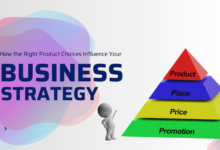Commonly Forgotten Factors in White-Label Lead-Generation Software Implementation

Lead generation is a necessary component of any successful marketing strategy, and White-Label Lead-Generation Software offers a powerful solution for businesses to capture and convert potential customers. However, in a rush to implement such software, many organizations overlook critical factors that can significantly impact the effectiveness of their lead-generation efforts. This article will explore eight commonly forgotten factors that deserve careful consideration when implementing white label lead generation software.
The marketing world is dynamic, and staying competitive means adopting cutting-edge tools and strategies. White-Label Lead-Generation Software is one such tool that empowers businesses to generate leads efficiently. However, implementing such software is not as straightforward as it may seem. To make the most of this technology, businesses must not forget essential factors that can affect the success of their lead generation efforts.
1. Clear Goal Setting
One of the most common oversights in lead generation software implementation is the lack of precise goal setting. Businesses often rush into deploying the software without a well-defined strategy. Establishing specific goals and objectives, such as the number of leads to be generated, the target audience, and the desired conversion rate, is crucial. The software may not be utilized to its full potential without clear goals.
2. Comprehensive Training
Effective use of White-Label Lead-Generation Software requires thorough training. Neglecting this aspect can result in underutilization of the software’s capabilities. Training should not be limited to a one-time session but should be an ongoing process to keep the team updated on best practices, new features, and any changes in the software. Additionally, continuous training ensures that the team remains proficient in using the software and can adapt to evolving lead generation strategies and industry trends, maximizing the software’s potential.
3. Integration with Existing Systems
Integration is often an overlooked factor during software implementation. White-Label Lead-Generation Software should seamlessly integrate with existing CRM (Customer Relationship Management) systems, email marketing tools, and other relevant platforms. Failure to ensure smooth integration can lead to data silos and inefficiencies in lead management.
4. Data Security and Compliance
Data security and compliance with regulations such as GDPR (General Data Protection Regulation) are crucial considerations when implementing lead generation software. Neglecting data protection measures can result in legal issues and damage to the company’s reputation. It’s essential to ensure that the software adheres to data privacy laws and that data is securely stored and processed. Furthermore, a proactive approach to data security can also enhance customer trust and confidence, as clients are increasingly concerned about the safety of their personal information in the digital age.
5. Lead Qualification Criteria
Defining lead qualification criteria is often an afterthought in implementing lead generation software. However, without clear criteria, businesses may end up with a high volume of leads that do not align with their ideal customer profiles. Establishing lead qualification criteria ensures that the leads generated are of high quality and more likely to convert. Moreover, this upfront effort enhances lead quality and streamlines the lead nurturing process, allowing sales and marketing groups to focus their efforts on leads with the highest potential for conversion, ultimately leading to a more efficient and productive lead generation strategy.
6. Continuous Optimization
Many businesses forget that lead generation is an ongoing process that requires continuous optimization. Setting up the software and leaving it to run can lead to diminishing returns over time. Regularly analyzing performance metrics, conducting A/B tests, and making necessary adjustments are essential for maintaining the effectiveness of lead generation efforts.
7. Lead Nurturing Strategies
Generating leads is only the first step; nurturing those leads to conversion is equally critical. Businesses often forget to implement lead nurturing strategies within the software. Automating email sequences, personalized follow-ups, and targeted content delivery should be integrated into the lead-generation process to maximize conversion rates.
8. Reporting and Analytics
Effective lead generation relies on data-driven decision-making. However, some businesses overlook the importance of robust reporting and analytics within their lead generation software. Without access to meaningful data, assessing campaigns’ performance, identifying improvement areas, and making informed decisions to optimize lead generation efforts becomes challenging.
Conclusion
Implementing white label lead generation software can be a game-changer for business organizations looking to expand their customer base and drive growth. However, overlooking critical factors during the implementation process can hinder the software’s effectiveness and result in missed opportunities.
Business organizations can harness the full potential of their lead generation software by setting clear goals, providing comprehensive training, ensuring seamless integration, prioritizing data security, defining lead qualification criteria, focusing on continuous optimization, implementing lead nurturing strategies, and leveraging robust reporting and analytics.
In the competitive digital marketing landscape, attention to these commonly forgotten factors can make a significant difference in the success of lead generation efforts. Prioritizing these aspects will ultimately position businesses to capture and convert leads effectively.






